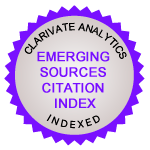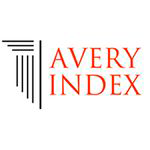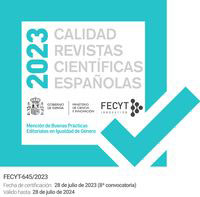Coexistencia interespecie y sensibilidad ambiental en el diseño urbano: un estudio cualitativo en Onex, Suiza
DOI:
https://doi.org/10.14198/i2.28842Palabras clave:
sensibilidad ambiental, codiseño interespecies, ciudad multiespecies, diseño urbano, investigación cualitativa, adaptación climática, Onex, SuizaResumen
Este artículo presenta un análisis cualitativo basado en datos recogidos en el proyecto L’étendue sauvage. remarquer le monde qui nous échappe, en Onex, Suiza, durante el verano de 2022. A través de 47 entrevistas semiestructuradas y mapas interactivos, el estudio exploró la sensibilidad ambiental de los residentes y su capacidad para percibir, experimentar emocionalmente y adaptarse a nuevas realidades eco-sociales. El objetivo principal fue investigar cómo los habitantes urbanos perciben y se vinculan emocionalmente con presencias más-que-humanas en su entorno, examinando el potencial de reconfigurar el diseño urbano a través de relaciones interespecies. El análisis se organizó en dos ejes: la percepción de la vida silvestre y las emociones asociadas a eventos climáticos disruptivos. Entre los hallazgos más relevantes destaca el reconocimiento generalizado de especies históricamente estigmatizadas, como ratas y murciélagos, como “Habitantes Independientes Legítimos de la Ciudad” (LIIC), desafiando narrativas urbanas antropocéntricas tradicionales. Asimismo, se constató una creciente afinidad emocional hacia las transformaciones ambientales, evidenciada en preocupaciones, memorias afectivas y adaptaciones cotidianas frente al cambio climático. El estudio concluye abogando por una aproximación cosmopolítica y multiespecie en el diseño urbano, promoviendo el reconocimiento de la agencia y los derechos de entidades más-que-humanas y fomentando la construcción de ciudades como ecosistemas dinámicos, sensibles y compartidos.
Citas
Alaimo, S. (2016). Exposed: Environmental politics and pleasures in posthuman times. University of Minnesota Press. https://doi.org/10.5749/minnesota/9780816621958.001.0001
AR6 Climate Change 2022: Mitigation of Climate Change - IPCC 20. Retrieved May 11, 2023, from https://www.ipcc.ch/report/sixth-assessment-report-working-group-3/
Baker, S., Johnson, & Macdonald. (2020). Not in My Backyard: Public Perceptions of Wildlife and 'Pest Control' in and around UK Homes, and Local Authority 'Pest Control.' Animals, 10, 222. https://doi.org/10.3390/ani10020222
Barnett, J., & Bouw, M. (2022). Managing the Climate Crisis: Designing and Building for Floods, Heat, Drought, and Wildfire. Island Press.
Barrios, R. E. (2017). Governing Affect: Neoliberalism and Disaster Reconstruction. U of Nebraska Press. https://doi.org/10.2307/j.ctt1mtz7p9
Barry, K., Borovnik, M., & Edensor, T. (2021). Weather: Spaces, mobilities and affects. Routledge. https://doi.org/10.4324/9780367808198
Bateson, G. (2000). Steps to an Ecology of Mind: Collected Essays in Anthropology, Psychiatry, Evolution, and Epistemology. University of Chicago Press. https://doi.org/10.7208/chicago/9780226924601.001.0001
Bele, A., & Chakradeo, U. (2021). Public Perception of Biodiversity: A Literature Review of Its Role in Urban Green Spaces. Journal of Landscape Ecology, 14(2), 1-28. https://doi.org/10.2478/jlecol-2021-0008
Ceballos, G., Ehrlich, P., & Raven, P. (2020). Vertebrates on the brink as indicators of biological annihilation and the sixth mass extinction. Proceedings of the National Academy of Sciences, 117, 201922686. https://doi.org/10.1073/pnas.1922686117
Châtelet, G. (2000). Figuring Space: Philosophy, Mathematics and Physics (Vol. 8). Springer Netherlands. https://doi.org/10.1007/978-94-017-1554-6
Chevalier, J. M., & Buckles, D. J. (2019). Participatory Action Research: Theory and Methods for Engaged Inquiry. Routledge. https://doi.org/10.4324/9781351033268
Coman, I., Cooper-Norris, C., Longing, S., & Perry, G. (2022). It Is a Wild World in the City: Urban Wildlife Conservation and Communication in the Age of COVID-19. Diversity, 14, 539. https://doi.org/10.3390/d14070539
Dewey, J. (1938). Logic The Theory of Inquiry. Henry Holt
Dietz, D., Dupuis, A., Lafontaine Carboni, J., & Negueruela Del Castillo, D. (2019). A Performative Threshold Between Teaching Research and Practice: Atlas Poliphilo as Scaffold. Practice of Teaching | Teaching of Practice: The Teacher's Hunch, 402-409. https://doi.org/10.35483/ACSA.Teach.2019.65
Dominguez Rubio, F., & Fogue, U. (2015). Unfolding the political capacities of design. In A. Yaneva & A. Zaera Polo, What is cosmopolitical design? Routledge
Donaldson, S., & Kymlicka, W. (2013). Zoopolis: A Political Theory of Animal Rights. Oxford University Press.
Frías-Sánchez, A., Perailes-Santiago, J., & Jiménez-López, D. (2024). Living Walls: Octavia E. Butler and Xenoarchitecture as an Interspecies Mediator. FOOTPRINT, 18(1), Article 1. https://doi.org/10.59490/footprint.18.1.6927
Gadanho, P. (2022). Climax Change!: Architecture's Paradigm Shift After the Ecological Crisis. Actar D.
Gandy, M. (2017). Urban atmospheres. Cultural Geographies, 24(3), 353-374. https://doi.org/10.1177/1474474017712995
Gunnarsson, B., Knez, I., Hedblom, M., & Sang, Å. O. (2017). Effects of biodiversity and environment-related attitude on perception of urban green space. Urban Ecosystems, 20(1), 37-49. https://doi.org/10.1007/s11252-016-0581-x
Hansen, J., Sato, M., Hearty, P., Ruedy, R., Kelley, M., Masson-Delmotte, V., Russell, G., Tselioudis, G., Cao, J., Rignot, E., Velicogna, I., Tormey, B., Donovan, B., Kandiano, E., von Schuckmann, K., Kharecha, P., Legrande, A. N., Bauer, M., & Lo, K.-W. (2016). Ice melt, sea level rise and superstorms: Evidence from paleoclimate data, climate modeling, and modern observations that 2 °C global warming could be dangerous. Atmospheric Chemistry and Physics, 16(6), 3761-3812. https://doi.org/10.5194/acp-16-3761-2016
Haraway, D. J. (2016). Staying with the Trouble: Making Kin in the Chthulucene. Duke University Press Books. https://doi.org/10.2307/j.ctv11cw25q
Head, L. (2016). Hope and Grief in the Anthropocene: Re-conceptualising human-nature relations. Routledge. https://doi.org/10.4324/9781315739335
Houston, D., Hillier, J., MacCallum, D., Steele, W., & Byrne, J. (2018). Make kin, not cities! Multispecies entanglements and 'becoming-world' in planning theory. Planning Theory, 17(2), 190-212. https://doi.org/10.1177/1473095216688042
Ichioka, S., & Pawlyn, M. (2021). Flourish: Design Paradigms for Our Planetary Emergency. Triarchy Press.
Ingold, T. (2020). The Perception of the Environment: Essays on Livelihood, Dwelling and Skill. Routledge. https://doi.org/10.4324/9781003196662
IPBES. (2019). Summary for policymakers of the global assessment report on biodiversity and ecosystem services. Zenodo. https://doi.org/10.5281/zenodo.3553579
Jaque, A., Otero Verzier, M., & Pietroiusti, L. (2021). More-Than-Human. Archive Books.
Jones, O., Moore, N., & Roe, E. (2017). Participatory Research in More-than-Human Worlds. 228. Routledge.
Keck, F. (2020). Avian Reservoirs: Virus Hunters and Birdwatchers in Chinese Sentinel Posts. Duke University Press. https://doi.org/10.1215/9781478007555
Kirksey, S. E., & Helmreich, S. (2010). The Emergence of Multispecies Ethnography. Cultural Anthropology, 25(4), 545-576. https://doi.org/10.1111/j.1548-1360.2010.01069.x
Knox, H. (2020). Thinking Like a Climate: Governing a City in Times of Environmental Change. Duke University Press Books. https://doi.org/10.1215/9781478012405
Latour, B. (2004). Politics of Nature: How to Bring the Sciences into Democracy. Harvard University Press.
Latour, B. (2007). Reassembling the Social: An Introduction to Actor-Network-Theory. Oxford University Press.
Manning, E. (2016). The Minor Gesture. Duke University Press. https://doi.org/10.2307/j.ctv111jhg1
Massumi, B. (2002). Parables for the Virtual: Movement, Affect, Sensation. Duke University Press. https://doi.org/10.2307/j.ctv11smvr0
Metzger, J. (2015a). Expanding the subject of planning: Enacting the relational complexities of more-than-human urban common(er)s. Taylor & Francis.
Metzger, J. (2015b). The city is not a menschenpark: Rethinking the tragedy of the Urban commons beyond the human/ non-human divide. In Urban Commons: Rethinking the City.
Neimanis, A., & Loewen Walker, R. (2014). Weathering: Climate Change and the "Thick Time" of Transcorporeality. Hypatia, 29(3), 558-575. https://doi.org/10.1111/hypa.12064
O'Lear, S. (2016). Climate science and slow violence: A view from political geography and STS on mobilizing technoscientific ontologies of climate change. Political Geography, 52, 4-13. https://doi.org/10.1016/j.polgeo.2015.01.004
Plumwood, V. (2002). Environmental Culture: The Ecological Crisis of Reason. Routledge.
Sala Futura. (2024). Interespecies. Dossier de exposición. Centro Cultural de Belém, Lisboa. Retrieved from https://www.ccb.pt/wp-content/uploads/2024/11/FSala-A5-INTERESPECIES-MAC.pdf
Schneider, T., & Till, J. (2009). Beyond Discourse: Notes on Spatial Agency. Footprint Delft Architecture Theory Journal. https://doi.org/10.59490/FOOTPRINT.3.1.702
Schrader, A. (2015). Abyssal intimacies and temporalities of care: How (not) to care about deformed leaf bugs in the aftermath of Chernobyl. Social Studies of Science, 45(5), 665-690. https://doi.org/10.1177/0306312715603249
Shingne, M. (2020). The more-than-human right to the city: A multispecies reevaluation. Journal of Urban Affairs, 44, 1-19. https://doi.org/10.1080/07352166.2020.1734014
Stengers, I. (2005). The Cosmopolitical Proposal. In B. Latour & P. Weibel, Making Things Public (pp. 994-1003). MIT Press.
Sweet, F. S. T., Mimet, A., Shumon, M. N. U., Schirra, L. P., Schäffler, J., Haubitz, S. C., Noack, P., Hauck, T. E., & Weisser, W. W. (2024). There is a place for every animal, but not in my back yard: A survey on attitudes towards urban animals and where people want them to live. Journal of Urban Ecology, 10(1), juae006. https://doi.org/10.1093/jue/juae006
Taylor, H. (2016). Marginalized voices: Zoömusicology through a participatory lens. In Participatory Research in More-than-Human Worlds. Routledge.
Tsing, A. L. (2015). The Mushroom at the End of the World: On the Possibility of Life in Capitalist Ruins. Princeton University Press. https://doi.org/10.1515/9781400873548
Tsing, A. L., Bubandt, N., Gan, E., & Swanson, H. A. (2017). Arts of Living on a Damaged Planet: Ghosts and Monsters of the Anthropocene. U of Minnesota Press.
Turpin, E. (2014). Architecture in the Anthropocene: Encounters Among Design, Deep Time, Science and Philosophy. Open Humanites Press. https://doi.org/10.3998/ohp.12527215.0001.001
Van Oorschot, I., & Van Balen, S. (2024). Sensing and making sense of climate change in a Western European urban setting: Bodily exposures, uncertain epistemologies, and climatic care practices. The Sociological Review, 00380261241274874. https://doi.org/10.1177/00380261241274874
Vannini, P., Waskul, D., Gottschalk, S., & Ellis-Newstead, T. (2012). Making Sense of the Weather: Dwelling and Weathering on Canada's Rain Coast. Space and Culture, 15(4), 361-380. https://doi.org/10.1177/1206331211412269
Wright, S., Suchet-Pearson, S., Lloyd, K., Burarrwanga, L., Ganambarr, R., Ganambarr-Stubbs, M., Ganambarr, B., & Maymuru, D. (2020). Gathering of the Clouds: Attending to Indigenous understandings of time and climate through songspirals. Geoforum, 108, 295-304. https://doi.org/10.1016/j.geoforum.2019.05.017
Wynter, S. (2015). The Ceremony Found: Towards the Autopoetic Turn/Overturn, its Autonomy of Human Agency and Extraterritoriality of (Self-)Cognition. In J. R. Ambroise & S. Broeck, Black Knowledges/Black Struggles: Essays in Critical Epistemology (pp. 184-245). Liverpool University Press. https://doi.org/10.5949/liverpool/9781781381724.003.0008
Yates, A., Zari, M. P., Bloomfield, S., Burgess, A., Walker, C., Waghorn, K., Besen, P., Sargent, N., & Palmer, F. (2023). A Transformative Architectural Pedagogy and Tool for a Time of Converging Crises. Urban Science, 7(1), 1. https://doi.org/10.3390/urbansci7010001
Descargas
Publicado
Cómo citar
Número
Sección
Licencia
Derechos de autor 2025 Aitor Frías-Sánchez, Estefanía Mompean Botias

Esta obra está bajo una licencia internacional Creative Commons Atribución-NoComercial-CompartirIgual 4.0.







